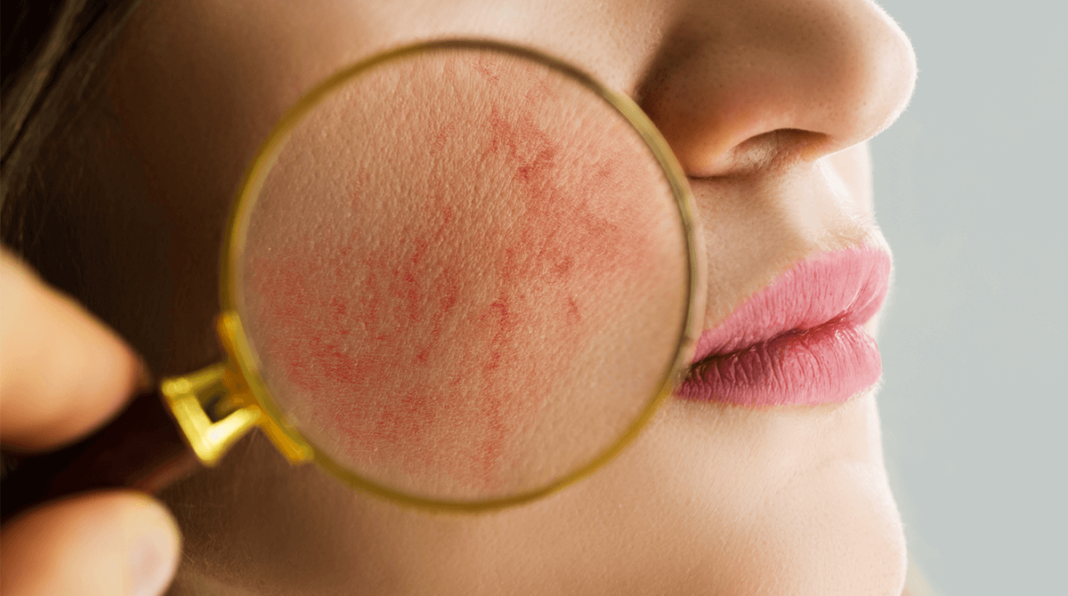Broken capillaries, often referred to as spider veins or telangiectasia, are small, dilated blood vessels that become visible on the skin’s surface. They can appear red, purple, or blue and are most commonly found on the face, especially around the nose, cheeks, and chin. While they are generally harmless, many people seek treatment options to minimize their appearance. In this article, we will explore various treatment methods, preventive measures, and lifestyle changes to help manage broken capillaries effectively.
Understanding Broken Capillaries
What Are Broken Capillaries?
Broken capillaries in Rioyadh (علاج الشعيرات الدموية للوجه في الرياض) are tiny blood vessels that have ruptured, resulting in visible marks on the skin. They are often caused by factors such as sun exposure, aging, hormonal changes, and lifestyle choices.
Common Causes
- Sun Exposure: UV rays can weaken the skin and blood vessels, making them more susceptible to damage.
- Genetics: Family history can increase the likelihood of developing broken capillaries.
- Aging: As we age, our skin loses elasticity, making capillaries more visible.
- Hormonal Changes: Fluctuations during pregnancy or menopause can contribute to their formation.
- Lifestyle Factors: Habits like excessive alcohol consumption, smoking, and exposure to extreme temperatures can worsen the condition.
Treatment Options for Broken Capillaries
1. Laser Therapy
How It Works
Laser therapy is one of the most effective treatments for broken capillaries. This procedure uses concentrated light energy to target the dilated blood vessels, causing them to collapse and fade from view.
Benefits of Laser Therapy
- Non-Invasive: Requires minimal downtime and is generally well-tolerated.
- Quick Results: Many patients see significant improvement after just one session.
- Long-Lasting Effects: Results can be permanent with proper skin care.
2. Intense Pulsed Light (IPL) Therapy
Overview of IPL
Intense Pulsed Light therapy utilizes broad-spectrum light to treat broken capillaries. The light targets the hemoglobin in the blood vessels, helping to reduce their appearance without harming surrounding skin.
Advantages of IPL Therapy
- Versatile Treatment: Addresses multiple skin concerns, including redness and pigmentation.
- Comfortable Experience: Most patients report minimal discomfort during the procedure.
- Quick Recovery: Patients can return to normal activities immediately.
3. Sclerotherapy
What Is Sclerotherapy?
Sclerotherapy involves injecting a solution directly into the affected veins, causing them to collapse. While this treatment is more commonly used for spider veins, it can also be effective for broken capillaries.
Key Points about Sclerotherapy
- Quick Procedure: Typically takes about 30 minutes to complete.
- Visible Results: Many patients notice improvements shortly after treatment.
- Multiple Sessions: Additional treatments may be necessary for optimal results.
4. Topical Treatments
Effective Ingredients
Certain over-the-counter creams and serums can help reduce the appearance of broken capillaries. Look for products containing:
- Vitamin K: Known to strengthen blood vessels and reduce redness.
- Retinoids: Promote cell turnover and improve overall skin texture.
- Niacinamide: Helps soothe inflammation and improves skin resilience.
5. Chemical Peels
What Are Chemical Peels?
Chemical peels involve applying a chemical solution to exfoliate the outer layer of skin, promoting new skin growth. This can help minimize the appearance of broken capillaries.
Benefits of Chemical Peels
- Enhances Skin Texture: Improves overall appearance and tone.
- Non-Invasive Option: Minimal downtime, making it a convenient choice.
- Customizable Treatment: Can be tailored to specific skin types and concerns.
6. Radiofrequency Therapy
Overview of Radiofrequency Therapy
Radiofrequency therapy uses heat generated by radio waves to treat broken capillaries. This treatment can help tighten skin and reduce the appearance of visible blood vessels.
Benefits of Radiofrequency Therapy
- Non-Invasive: No need for incisions or invasive procedures.
- Long-Lasting Results: Often provides permanent solutions for treated veins.
- Comfortable Procedure: Generally well-tolerated with local anesthesia.
7. Home Remedies
Natural Approaches
While professional treatments can be effective, some home remedies may also help improve the appearance of broken capillaries:
- Cold Compresses: Applying a cold compress can constrict blood vessels and reduce redness.
- Herbal Remedies: Ingredients like horse chestnut and green tea may help strengthen blood vessels.
- Gentle Massage: Lightly massaging the area with a soothing oil can enhance blood flow and improve skin elasticity.
Preventive Measures
1. Protect Your Skin from the Sun
Daily Sunscreen Use
Using sunscreen daily is one of the most effective ways to prevent broken capillaries. Choose a broad-spectrum sunscreen with at least SPF 30 and reapply every two hours when outdoors.
2. Maintain a Healthy Lifestyle
Diet and Hydration
A balanced diet rich in vitamins and antioxidants can support skin health. Staying hydrated by drinking plenty of water also keeps your skin supple and resilient.
3. Avoid Known Triggers
Identify and Minimize Risks
Limiting exposure to excessive alcohol, smoking, and extreme temperatures can help reduce the likelihood of developing broken capillaries.
4. Gentle Skincare Routine
Choosing the Right Products
Use gentle cleansers and moisturizers that do not irritate your skin. Avoid harsh scrubs or strong chemical peels unless advised by a professional.
When to Seek Professional Help
If broken capillaries persist or worsen despite home remedies and preventive measures, it may be time to consult a professional. Persistent redness or swelling can indicate underlying skin conditions that require targeted treatment.
Conclusion
Treating broken capillaries on the face involves a combination of professional treatments and lifestyle changes. From effective options like laser therapy and sclerotherapy to preventive measures and home remedies, there are various ways to manage this common skin concern. By understanding the causes and exploring the available treatments, you can take proactive steps toward achieving clearer, healthier skin. Embrace these methods, and take control of your skin health to minimize the appearance of broken capillaries and boost your confidence!
